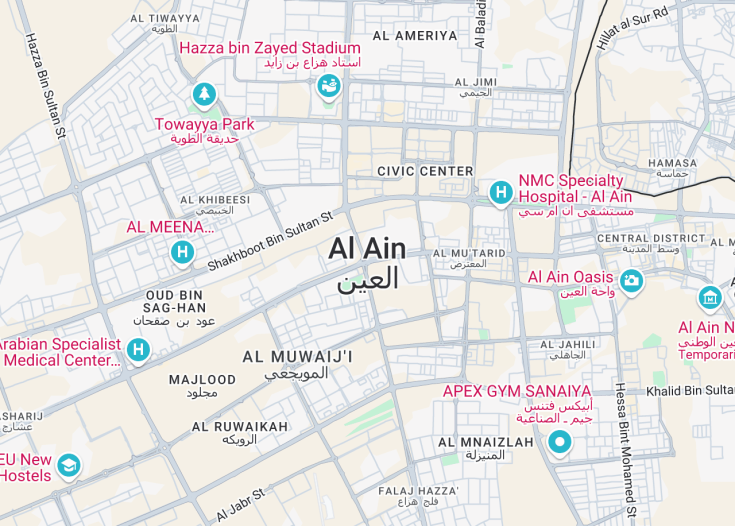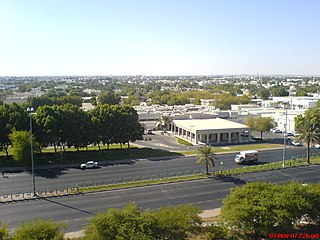Al Ain, known as the “Garden City” of the United Arab Emirates, is an enchanting destination nestled between the formidable Hajar Mountains and expansive desert landscapes. This oasis city boasts lush greenery, ancient forts, and vibrant markets. Known for its cooler climate and extensive gardens, Al Ain is a refreshing escape from the hustle of urban life in nearby bustling cities. Its rich historical heritage is evident in well-preserved sites like the Al Ain Oasis and the Al Jahili Fort, making it a captivating journey into the heart and history of Arabian culture.
When visiting Al Ain, prioritize exploring the Al Ain Oasis. This natural sanctuary offers walks among ancient date palm groves, providing a serene and picturesque experience unique to the region.
Consider timing your visit to coincide with cooler months, from November to March, to enhance your experience with pleasant weather, perfect for outdoor exploration and cultural festivals.
How to best experience Al Ain?
Tickets, tours, and activities for Al Ain are available at these providers:
Click on the logos below to easily compare prices.

Feeling lucky? Try the direct search:
GetYourGuide.com Viator.com Trip.com Expedia.com Tiqets.com Ctrip.com (中文)
Al Ain: The Garden City of the Gulf
| Country | United Arab Emirates |
| Time in Al Ain | GMT+4 |
| Language spoken | Arabic |
| Population | 766,936 (World Population Review, 2023) |
| Currency | United Arab Emirates Dirham (AED, د.إ) |
| Airports |
|
Located in the United Arab Emirates, Al Ain, often known as the Garden City due to its greenery, is the second largest city in the Emirate of Abu Dhabi and the fourth largest city in the United Arab Emirates. Nestled on the border with Oman, this historic city sits beneath the dramatic Hajar Mountains. As a part of the Abu Dhabi emirate, Al Ain enjoys a strategic position away from the hustle and bustle of the major cities like Abu Dhabi and Dubai.
Al Ain is renowned for its lush landscapes, numerous parks, and wide boulevards. It is one of the world’s oldest continually inhabited settlements, with a history that dates back more than 4,000 years. It is a UNESCO World Heritage Site due to its importance as a cultural site, particularly for its ancient tombs at Hili, which are estimated to be over 4 millennia old. Moreover, Al Ain is famous for its traditional forts and the Al Ain Oasis, where visitors can experience a unique aspect of Emirati heritage.
The city’s economy is primarily based on tourism, educational institutions, and government services. Being home to several universities, including the United Arab Emirates University, Al Ain also serves as a significant educational hub for the country. Furthermore, its markets, especially the camel market, provide a unique insight into traditional Arabic culture.
Al Ain also boasts world-class facilities such as Al Ain Zoo, Al Ain Equestrian, Shooting & Golf Club, and Wadi Adventure, a man-made whitewater rafting, kayaking, and surfing facility, which are major attractions for both residents and international visitors.
Where is Al Ain?
Al Ain is located in the Eastern region of Abu Dhabi Emirate, United Arab Emirates, abutting Oman at the eastern borders.
Distances:
| Route | Distance by car | Time by car |
|---|---|---|
| Abu Dhabi to Al Ain | 160 km | Approx. 1.5 hours |
| Dubai to Al Ain | 140 km | Approx. 1.25 hours |
What is Al Ain famous for?
Al Ain is famous for its rich history and cultural sites like the Al Ain Oasis, its historical forts, archaeological digs, and a preserved traditional way of life. It’s also known for its educational institutions and beautiful green spaces.
History
Al Ain, a gem in the United Arab Emirates, pulsates with a rich history that dates back to the Neolithic period. This oasis city, affectionately known as the Garden City due to its verdant landscapes, has been a crucial settlement for thousands of years. Explore the historical timeline of Al Ain, witnessing its growth from an ancient gathering place to a modern cultural hub.
6000 BCE – 3000 BCE: Early Settlements
The earliest traces of human settlement in Al Ain can be linked back to the Hili Archaeological Park, where remnants of Bronze Age communities have been unearthed. These initial inhabitants of Al Ain leveraged the city’s fertile land and abundant water supplies, laying down the roots of a thriving community.
3000 BCE – 630 AD: Trading and Agricultural Development
During this period, Al Ain witnessed significant advancements in agriculture and trade, with the development of the falaj irrigation system, a brilliant engineering feat that allowed the distribution of water in a desert landscape. This era solidified Al Ain as an agricultural heartland in the region.
630 AD – 1900: Islamic Influence and Regional Importance
The spread of Islam brought new architectural and cultural developments to Al Ain. The city became an important stopover on the caravan routes across the Middle East, facilitating trade and cultural exchanges. Iconic forts, such as Al Jahili Fort, were constructed during this period to protect the oasis and its people.
1900 – Present: Modernization and Preservation
In the 20th century, Al Ain evolved rapidly with the discovery of oil in the region, prompting significant economic and social transformations. Despite modernization, the city has preserved its heritage and traditions, balancing urban growth with cultural preservation. Present-day Al Ain boasts museums, heritage sites, and modern infrastructures, making it a unique blend of old and new.
Visit Al Ain
What to see and do in Al Ain
In the vibrant city of Al Ain, visitors can partake in a wide range of activities and sightseeing opportunities. From exploring ancient forts and museums to enjoying the lush gardens and natural reserves, Al Ain offers a diverse experience for all travelers.
- Visit the Al Ain Oasis, a UNESCO World Heritage Site, to see the traditional falaj irrigation system.
- Explore the Al Ain Palace Museum, the residence of the late UAE founder, Sheikh Zayed Bin Sultan Al Nahyan.
- Relax in the Al Ain Zoo, home to over 4,000 animals and a learning center about wildlife conservation.
- Admire the views from Jebel Hafeet, the second tallest mountain in the UAE, which towers over the city.
Cultural and Seasonal Events in Al Ain
Al Ain is host to several cultural and seasonal events that enrich its social landscape. Key events include:
- The Al Ain Camel Market, one of the last of its kind in the UAE, operates throughout the year offering a glimpse into traditional Bedouin culture.
- The Al Ain Film Festival, held annually in January, celebrates the art of filmmaking in the region.
- The Garden City Festival, which takes place in the cooler months from November to January, features concerts, workshops, and food stalls exploring local and international cultures.
Best time to visit Al Ain
The ideal time to visit Al Ain is between October and April when the weather is cooler and more conducive to exploring the outdoor attractions. During these months, the temperature is pleasant, allowing for daytime adventures and comfortable evenings.
Is Al Ain worth visiting?
Al Ain is undoubtedly worth a visit for anyone interested in the rich tapestry of Middle Eastern history, culture, and natural beauty. The city offers a less hectic retreat compared to the bustling metropolises of Dubai and Abu Dhabi with its lush greenery, historic sites, and tranquil ambiance. Whether you’re a history buff, nature lover, or culture enthusiast, Al Ain provides a profound and enriching experience that is both educational and enjoyable.

